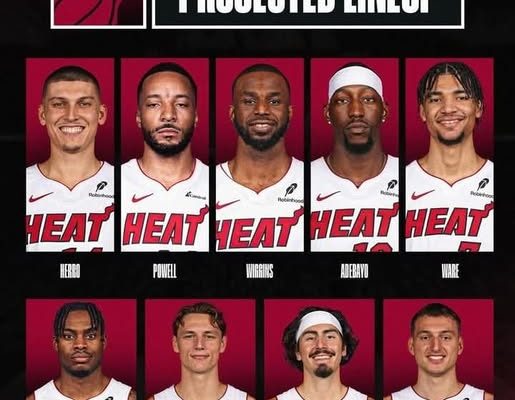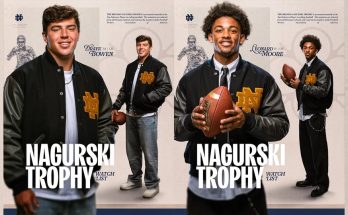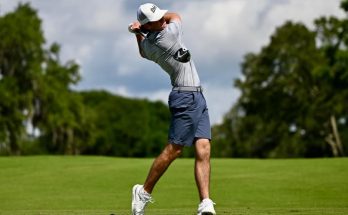The 2025-26 Miami Heat are heading into the new NBA season with a roster that is anything but conventional, and yet, strangely intriguing. Heat Nation has grown accustomed to overachievement in recent years, often squeezing the most out of rosters that national pundits quickly dismissed. But even by their standards, this projected lineup has raised more than a few eyebrows. With a backcourt of Tyler Johnson and Terry Rozier, and a frontcourt featuring additions like Simone Fontecchio, Vladislav Goldin, and Jaylen Gardner, there’s an undeniable whiff of experimentation—and perhaps desperation—surrounding Miami’s current blueprint. The big question now: is this a playoff-bound group, or are the Heat veering toward another year in the NBA’s purgatory?
There’s something to be said about continuity, culture, and coaching. Miami’s “Heat Culture,” anchored by head coach Erik Spoelstra and president Pat Riley, has kept the team competitive long after their superstar days. But at some point, the lack of elite talent on the roster can only be covered up for so long. That’s what makes this lineup so complicated to evaluate. Let’s start with the backcourt. Tyler Johnson, who returns to Miami in a full-circle moment, is no longer the athletic combo guard that earned himself a massive contract nearly a decade ago. While he remains a fan favorite, his productivity and explosiveness have dipped. His role in this lineup looks more like a veteran placeholder than a foundational piece. As for Terry Rozier, he’s shown flashes of brilliance throughout his career, particularly during his time with Charlotte, and his scoring punch could be a lifeline for a team that may lack offensive firepower. But the question remains: is Rozier a point guard who makes others better, or a scoring guard best suited for a sixth-man role?
Then there are the new additions. Simone Fontecchio comes over after a decent run with the Utah Jazz, where he carved out a reputation as a reliable spot-up shooter and high-energy wing. The Heat desperately need shooting and spacing, and Fontecchio provides that. But he’s not a star, nor does he command defensive attention in the way Miami’s past wing players like Jimmy Butler or even Tyler Herro have. Fontecchio can thrive if surrounded by creators and playmakers, but that is where this roster may fall short.
Vladislav Goldin, the 7-footer out of Florida Atlantic, offers promise as a traditional big. He’s a rim protector, rebounder, and screen-setter who could benefit from Spoelstra’s developmental system. Yet he’s raw and untested at the NBA level. Counting on a rookie center to anchor the paint in a conference that features dominant bigs like Joel Embiid, Bam Adebayo (whom Miami may not even have anymore, depending on pending trade rumors), and Kristaps Porzingis is asking a lot. Goldin has the tools, but he will be exposed early and often unless the defensive schemes are built to hide his inexperience.
Jaylen Gardner is perhaps the biggest unknown in the projected lineup. An undersized forward with a high motor and defensive tenacity, Gardner is the kind of glue guy teams love but rarely feature in starting roles. If Gardner is indeed starting, it suggests Miami is doubling down on grit and hustle over star power. That may be admirable, but in a league increasingly dominated by pace, space, and scoring efficiency, Gardner’s fit will be scrutinized the moment the Heat find themselves unable to keep up with more offensively gifted squads.
One major factor that looms over this projection is the status of Jimmy Butler. His name has been swirling in trade rumors all offseason, and though he has expressed a desire to remain in Miami, the franchise may see this as a moment to pivot. If Butler is gone or plays limited minutes due to age or injury, this projected starting five becomes even more fragile. Bam Adebayo’s future is also murky, with conflicting reports about contract extensions and long-term plans. If both All-Stars are moved or miss significant time, the Heat’s chances of even reaching the Play-In Tournament plummet dramatically.
The Eastern Conference landscape doesn’t make matters any easier. The Boston Celtics, Milwaukee Bucks, and Philadelphia 76ers remain top-heavy and formidable. Up-and-coming teams like the Indiana Pacers, Cleveland Cavaliers, and Orlando Magic have only improved. Even the Chicago Bulls and Brooklyn Nets have retooled their rosters with younger, faster talent. In this crowded field, Miami’s projected lineup feels like a throwback—an echo of early 2000s squads that relied more on effort than offensive explosion. It might win them the hearts of fans, but will it win them enough games?
Erik Spoelstra remains Miami’s greatest asset. If there is any coach in the NBA capable of turning a questionable roster into a cohesive and competitive unit, it’s Spo. He’s done it before—most recently taking a #8 seed to the NBA Finals in 2023. But expecting lightning to strike again with even less proven talent may be a bridge too far. The Heat have a few young pieces that could surprise. Nikola Jović is still developing, and rookie picks could make waves if given opportunities. There’s also always the possibility that Pat Riley isn’t done making moves and could package expiring deals to bring in a more reliable scorer or defender before the deadline.
In terms of ceiling, if everything breaks right, the Heat could sneak into the back end of the playoffs—likely through the Play-In route. That would require Fontecchio to shoot lights out, Rozier to play the most efficient basketball of his career, Goldin to adapt quickly to the speed of the NBA, and Gardner to become a defensive menace. Even then, a first-round exit would be the realistic outcome. In the more plausible scenario, Miami hovers around the 11th to 13th seed, competitive but outgunned. It would mark a transition year, perhaps even a soft rebuild masked by veteran contracts and gritty performances.
Heat Nation is known for its loyalty and faith in the system. But fans are also smart—they recognize when a roster is built for development versus contention. Right now, this projected lineup looks like one intended to bridge the gap between eras. Without a true star leading the charge and with so many rotational players being asked to punch above their weight, Miami is flirting with mediocrity. And in today’s NBA, mediocrity is the most dangerous place to be—not bad enough to tank for a top pick, but not good enough to make noise in April.
So what’s next for this squad? The answer may lie not in the results but in the process. This season may be less about wins and more about discovering who on this roster can be part of Miami’s next legitimate playoff core. That could mean growing pains and frustration, but also opportunity and hidden gems emerging. If the Heat embrace that mindset and fans temper expectations, there’s value in the journey—even if it doesn’t end with a playoff berth. But if the goal is contention? This projected lineup, as it stands, won’t be enough.



